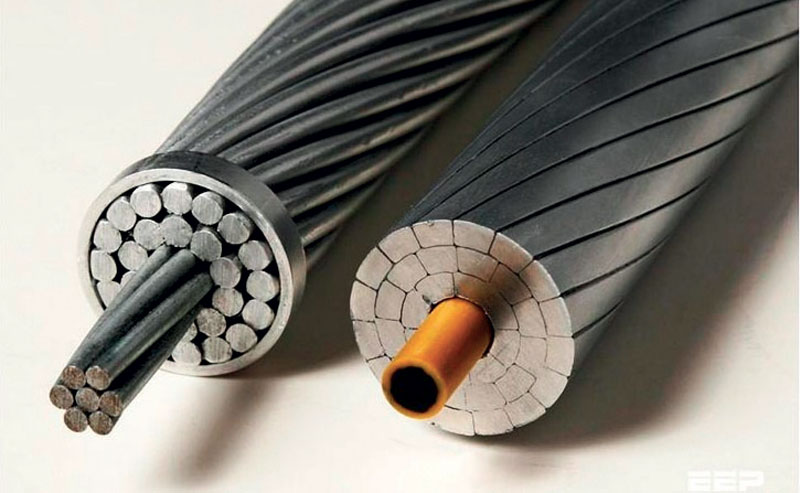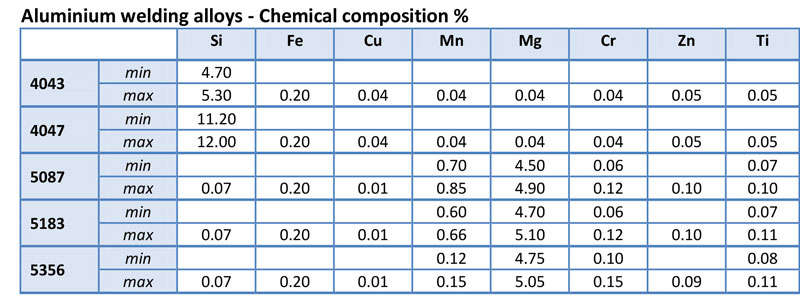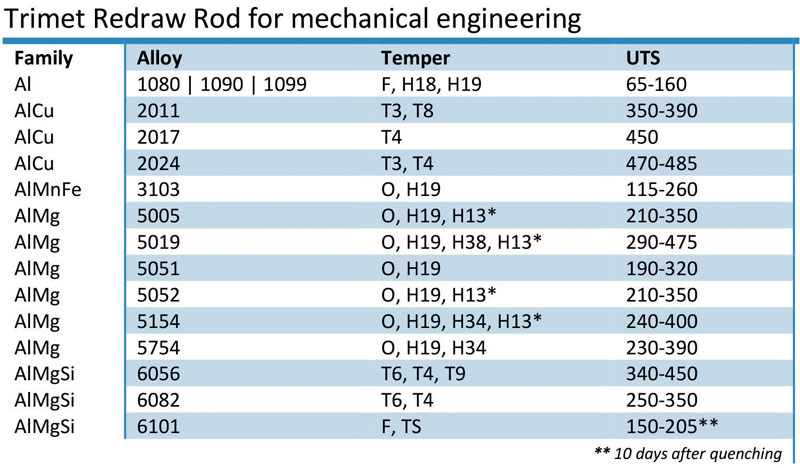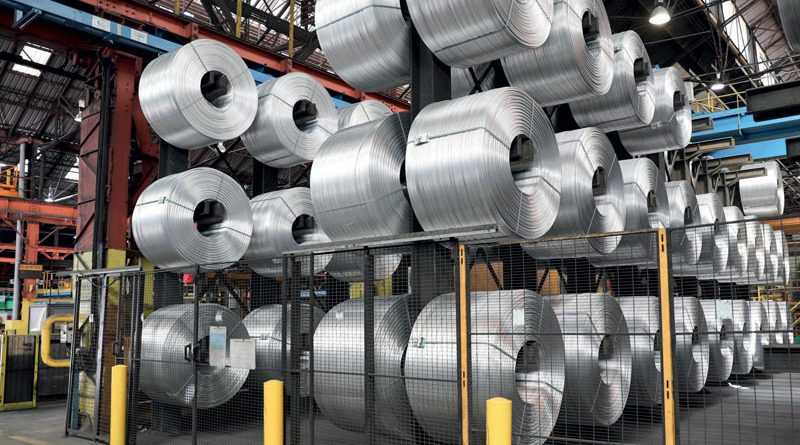Aluminium Wire Helps the Energy Transition
Continuous casting wire rod is a strategic material for electrical and mechanical aluminium applications. The experience of Trimet Group*
The Trimet Group is a German family-run company producing primary aluminium from electrolysis (540,000 tons/year) and remelting (240,000 tons/year) and transforming it into billets (90,000 tons/year), slabs (115,000 tons/year), alloy ingots (220,000 tons/year) and wire rod (95,000 tons/year).
Wire rod became part of the group’s production with the acquisition from Rio Tinto of the two French plants in Saint-Jean-de-Maurienne and Castelsarrasin at the end of 2013. These plants are the production units of Trimet France, in whose capital the French state-controlled electricity operator EDF holds a 35% share (figure 1). This presence underscores how strategic it is, in an evolved market, to have wire rod available for electrical uses, and especially for high-voltage lines; above all in view of the necessary upgrades of distribution networks in anticipation of the increase in demand for electricity linked to the energy transition. The Saint-Jean-de-Maurienne plant has 180 electrolytic cells, 11 casting furnaces (each 20-60 t capacity, gas-heated) and three machines for casting and rolling wire rod in a continuous process. This sub-sector produces about 150,000 tonnes/year of wire rod and employs 600 workers. Castelsarrasin, the other plant, is located in the south of France and specialises in the production of aluminium alloy wire rod for mechanical and welding purposes. It employs 35 workers and produces around 10,000 tonnes per year.

Continuous metal casting: the reasons behind its success
Continuous casting is the process that leads directly from the liquid metal to the semi-finished product. In this way it is possible to produce bars, profiles, strips and tubes both in steel and in non-ferrous metals such as copper and aluminium. In particular with regard to aluminium, the number of alloys that can be used with this process is increasing. The absence of heating and remelting processes in the production cycle makes the various continuous casting processes very attractive. Cost reduction is intuitively a particular advantage and it will be an all the more significant source of savings if the material has a higher melting point and thus a higher casting temperature. It is therefore not surprising that around 90% of the steel (melting point = 1400 °C approx.) processed in the world includes this method in its production cycle. In the aluminium sector (melting point = approx. 700 °C), processes involving continuous casting are used in much smaller percentages. The products obtained from continuous casting can be divided into two distinct types. The first leads to CC production of thin, wide plates used as thin sheet stock, cooling fins, capsules and cans. The second is characterised by the continuous production of bars, which can be used without further processing or used, after subsequent rolling, to produce wire rod of different diameters. This casting scheme may also be applied to the casting of large bars, such as to enable the production of ingots of various weights by cutting the bar lengthwise.

Metallurgical advantages of continuous casting
Continuous casting does not only bring economic advantages by affecting the energy balance of the process. The method is also convenient to achieve a good level of quality in the production of semis. In particular, CC allows good control of cooling and, as a result, the microstructure of the products is uniform. Compared to mould casting, CC also reduces the amount of scrap generated. Besides, the properties of the products can be easily modified by changing the melting parameters. Since all operations can be automated and controlled, continuous casting offers numerous possibilities to flexibly and quickly adapt production to changing market needs and combine it with digitisation technologies.

Bar production using continuous casting
Briefly, the continuous casting production of bars and subsequent rolling to produce wire rod is carried out according to the following scheme. In the process of continuous bar casting, the liquid metal passes through the groove of a cooled wheel and solidifies into the shape of the groove in cross-section. Then the semi-finished product coming out of the wheel is continuously deformed by passing through a series of rolling cages which gradually shape the rough product until it is transformed into round wire of the desired diameter.

From semi-finished to finished product
The rolled products obtained by the process described are used to manufacture a large number of products in various sectors of electrical engineering and mechanics. Figure 2 shows some of the products derived from wire rod.
Mechanical applications:
● Cables
● Power transmission and distribution lines
● Connections
● Flexible cables for batteries/transformers
Electrical applications:
● Fastening systems
● Screws
● Chains, grids, nets
● Forged parts, moulds
● Welding wire
● Metallisation
In general terms, the different applications are made possible by the use of various aluminium alloys with a wide range of technological properties.
The greatest diversification is between products for electrical engineering which will require semis with good electrical conductivity and applications in mechanics for which high tensile properties are usually required. Figure 3 shows the tensile properties of a large number of alloys used for wire rod. The ultimate tensile strength may be low (in the case of 1xxx alloys) or similar to that of a good carbon steel.
In other cases, as mentioned above, good electrical conductivity is sought, as in the case of the alloy ENAW 8040, whose chemical composition is shown in Figure 4. This alloy is used in high voltage lines due to its good temperature resistance. Al-Si and Al-Mg alloys are used for the production of filler material in welding. Differences in composition allow a wider choice to improve the quality of welded joints, as illustrated in Figure 5.

